If you’ve ever been to an eye clinic, you’re probably familiar with the classic line: “Can you read the bottom row of the chart?” But what if your answer is, “Nope, not even close”? And what if new glasses just don’t seem to help?
That’s where the magical world of Low Vision Exams comes in. It’s not your regular eye test—and trust us, that’s a good thing.
Let’s explore how this special kind of eye exam isn’t just about what you can’t see… it’s about figuring out how to make the most of what you can.
So, What Is Low Vision?
Low vision is when your sight can’t be fully corrected with regular glasses, contact lenses, surgery, or medications—but you’re not completely blind. You might struggle with:
-
Reading small print
-
Recognising faces
-
Seeing street signs
-
Navigating in low light
-
Watching TV
Conditions like macular degeneration, glaucoma, diabetic retinopathy, or childhood eye disorders often cause it. And no, it’s not just for the elderly—kids and adults can have low vision too!
Enter: The Low Vision Exam
This is not your average 10-minute appointment. A low vision exam is like detective work for your eyes.
Instead of only measuring your vision and changing your prescription by 0.25 diopters (yawn), your low vision specialist digs deeper. They ask questions like:
-
“What exactly can you still see?”
-
“What do you wish you could do better?”
-
“Which daily tasks are frustrating for you?”
It’s more about your real life than just your retina.
What Happens During a Low Vision Exam?
Glad you asked. Here’s what you can expect—minus the white coats and intimidating vibes:
1. Vision Function Testing
They’ll test how far and how clearly you can see, but also how well you function in different situations: close-up, far away, in low light, or with glare. You might even try reading using magnifiers or special lighting.
2. Visual Field Mapping
Peripheral vision counts too! Tests will check if you’re missing chunks of your side vision—super important if you’re bumping into furniture or people (we’ve all been there).
3. Trying Out Tools
The best part? It’s like a gadget expo for your eyes.
-
High-powered reading glasses
-
Handheld magnifiers
-
Telescope-like spectacles (tiny but mighty!)
-
Talking clocks, large print books, and even apps!
Your specialist will help you try before you buy, tailoring tools to your lifestyle—whether that’s reading novels, knitting, or playing board games with grandkids.
Why Is This Exam So Different?
Because it focuses on functionality over just “correcting” your vision.
It’s like going from:
“Sorry, we can’t make your eyesight 6/6,”
to “Let’s make sure you can read your WhatsApp messages again and pour tea without spilling!”
That’s empowering. That’s life-changing. That’s what low vision care is all about.
Who Needs a Low Vision Exam?
Anyone who:
-
Has a permanent vision condition
-
Isn’t getting enough help from regular glasses
-
Feels like vision issues are limiting their independence
If you’re squinting at menus, avoiding hobbies, or feeling frustrated, it’s time to schedule that exam.
It’s Not About What You’ve Lost—It’s About What You Can Still Do
A low vision exam doesn’t end with a number on your prescription. It ends with hope, solutions, and tools that help you reconnect with the life you love.
So whether you’re struggling to thread a needle, read a recipe, or see your grandkid’s smile clearly—don’t give up.
A low vision exam can open up a whole new world of possibilities. And no, you don’t need x-ray vision to get started… just a willingness to take the next step.
Ready to turn “I can’t see that” into “I got this!”?
Talk to us about a low vision evaluation today—because your vision goals deserve more than just a chart and a shrug.

